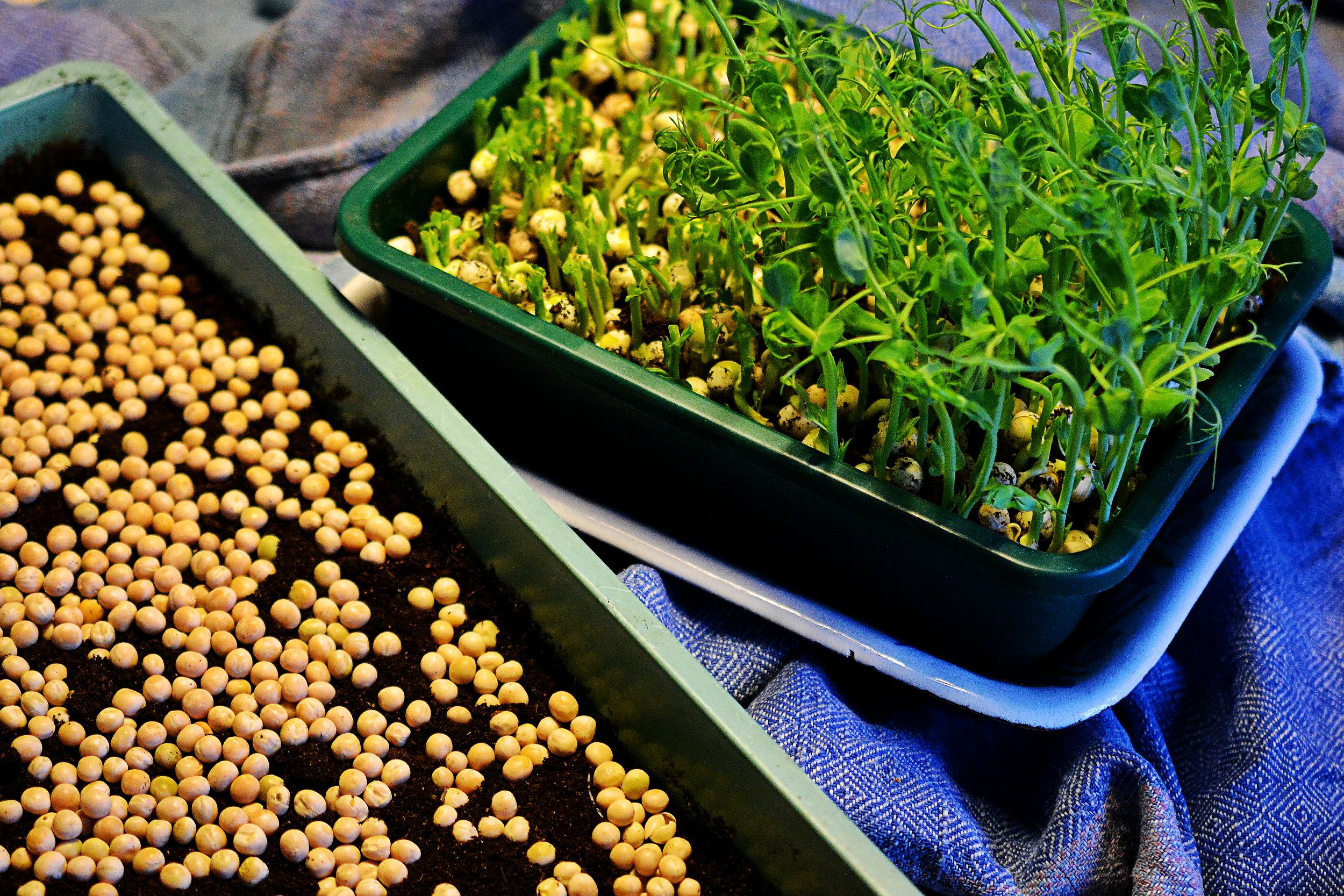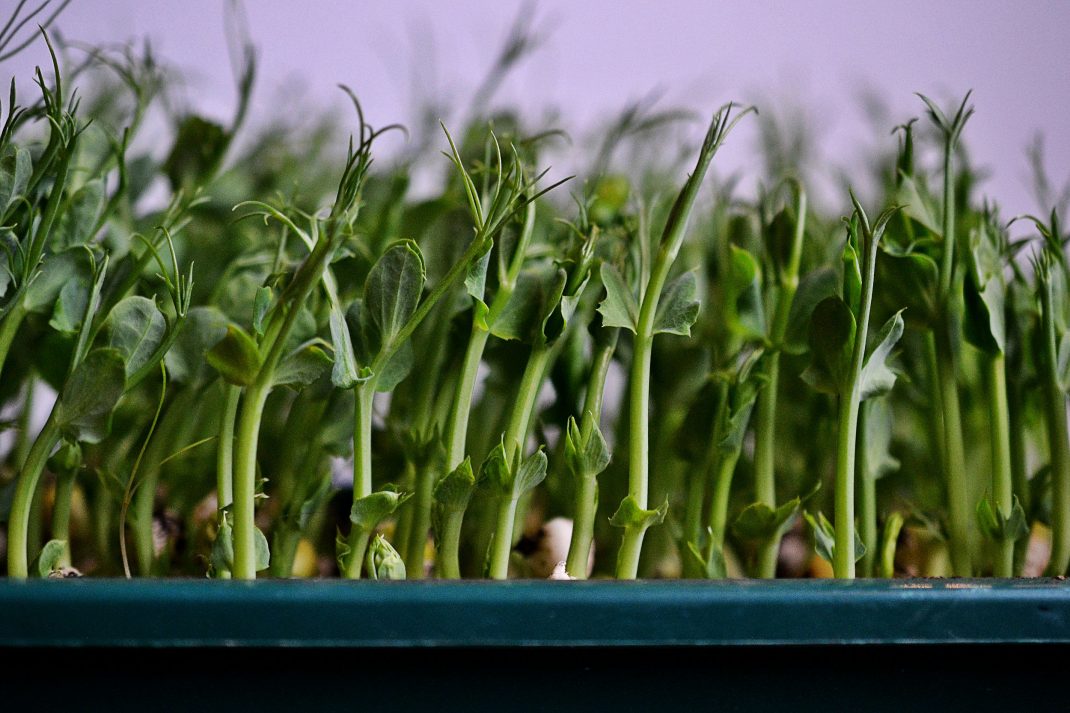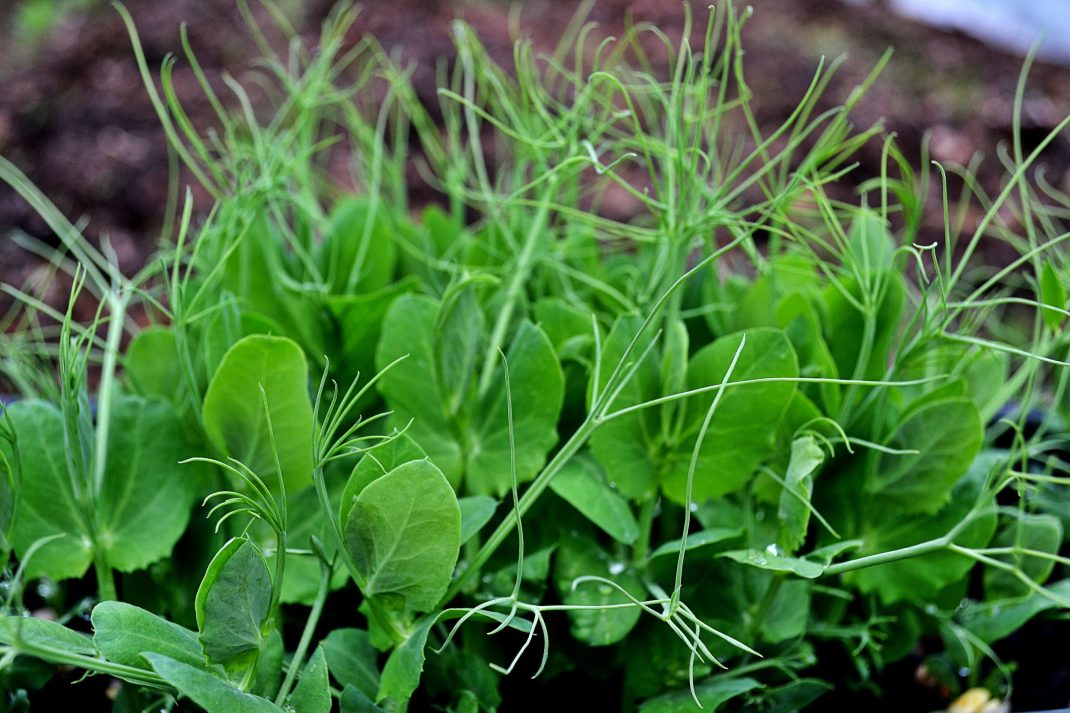Big troughs of pea sprouts
There really is no point in growing just a small batch of pea shoots. If you want your farming to make a difference in your wallet and over all house hold you’ll need to grow quite a lot. And that’s really not such a hassle.

Lovely pea sprouts in different stages, some are ready to be harvested.
I usually grow my pea sprouts in big trays and troughs that I completely fill up. Recently I’ve seen a lot of pictures online showing pea sprouts in tiny little bowls and pots, which got me curious. Just how long would that harvest last? Is growing that little worthwhile? Sure, I do see the esthetic value of a beautiful small pot overflowing with proud green pea sprouts, but if all of that fixing doesn’t give any real return I hope this entry about the opposite approach may be beneficial. Although the actual method for growing them is identical.
I tested growing some in a smaller trough, about twenty by fifteen centimeters. We harvested our first sprouts for yesterdays lunch and come breakfast today, we were all out. The kids have definitely eaten most of them and I really don’t blame them. The tender little sprouts smell and taste so good that it’s really hard not to keep snacking on them once you’ve started. So, our harvest didn’t even last 24 hours. That makes for a whole lot of little pots to keep after to get any return for a family with a couple of kids. I need to think bigger. And quite possibly, so do you.
My first January sowings (indoors)
Pea sprouts can be grown indoors without any extra light source - your only limitation is space. I’m fortunate to have extra deep window sills in some of my windows, and these I gladly fill with pea sprouts. These accommodate bigger troughs, trays really, several in rows. A smaller pea sprout factory like this can make a difference in your household economy, or at least more so than the odd pot. With an even and rather large harvest we don't need store-bought cucumbers for putting on sandwiches. A win-win situation for my wallet and the environment. Our kids really enjoy the sprouts and when we have some ready for harvest, they’ll have both one and two sandwiches with only pea sprouts and some chili salt on top. If there’s plenty we’ll gladly put a big pile of them on top of an omelet or in a salad with shredded carrots.

A dense carpet of pea sprouts at their finest. Under 4 inches (10 cm), chubby and totally snackable.

Pea sprouts need about a week from planting to harvest, within 8-10 days you can start cutting them down. They are tastiest when they’re under 4 inches (10 cm), chubby with a thick foliage. Always make sure to leave about 0,75 inches (2 cm) above the peas to let them regerminate and shoot new shoots.
The chubbier the better

Pea sprouts are fast growers even in the vegetable garden. These were put in the ground in June for a quick harvest before I plant my fall vegetables.
07. February 2019



Leave a Reply
You must be logged in to post a comment.